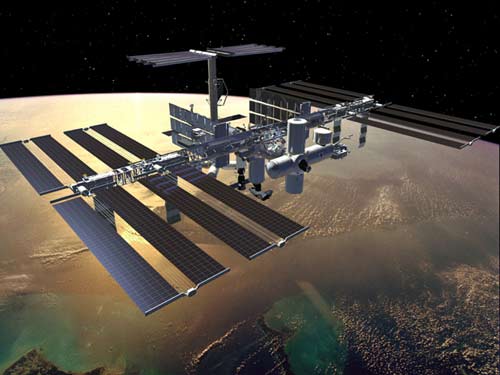Korea joined the ranks of satellite powers
At the end of last August, South Korea's fixed-phone telecommunications group, KT, launched the Koreasat-5 commercial-military satellite (Korean name Mugunghwa-5), bringing the country into the national club. There are 10 or more satellites launched.
The satellite worth $ 156 million, developed by this group and the Ministry of Defense, is currently operating in a geostationary way, 35,786 km from the earth. KT spokesman, Hwang Dae-woon, said the French ground control station in Toulouse was connected to the satellite about an hour after the Koreasat-5 satellite left the ground.
KT estimates that after four months of testing will start to exploit services via Koreasat-5 satellite. According to Mr. Hwang, Koreasat-5 will create conditions for other countries to get closer to Korea's spectacular art performances. Unlike previous KT satellites that support telecommunications services within the country of exploitation, Koreasat-5 will reach other countries and territories in Asia, including Japan and China, Taiwan, Philippines. The satellite has 36 Ku-band transmitters - KT will make use of 24 systems and the Ministry of Defense uses the remaining 12 systems. KT will use half of the 24 broadcast systems to replace Koreasat-2 for broadcasting within Korea while the remaining 12 will be used for services in Asia-Pacific.

Koreasat-5 commercial-military satellite (Photo: alespazio.it)
Earlier, on July 28, Korea also had a memorable moment of success that helped them become the world's sixth satellite power when successfully launching the Arirang-2 satellite from the Plesetsk space airport, how Mockba capital (Russia) is about 800 km to the northeast and goes into orbit 685 km from the earth. This event is hard to forget because two days earlier, Russian Dnepr missiles, converted from intercontinental ballistic missiles, caught fire when carrying small Hausat-1 Korean satellites, while Rockot missiles carrying Arirang-2 satellites are also converted from an intercontinental missile. The ground control station verified that the 800 kg Arirang-2 satellite was in its designated orbit and worked well. It captures high-resolution images of space with a multi-spectral camera, and can simultaneously capture two or more images from a scene with each shot taken in a different spectrum.
HQ
- Korea will launch the satellite after two failed attempts
- Korea launched the first satellite into space
- Korea will launch satellites from the Pacific Ocean
- Korea launched its first satellite on January 30
- South Korea announced the successful launch of the satellite
- South Korea ranked fourth in nanotechnology
- South Korea: Satellite is missing immediately after launch
- Korea plans to launch satellites into space
- Russian missile launches
- Korea launches missiles carrying satellites
- Japan jumped into the field of launching satellites
- Korea delayed the launch of the rocket
 Van Allen's belt and evidence that the Apollo 11 mission to the Moon was myth
Van Allen's belt and evidence that the Apollo 11 mission to the Moon was myth The levels of civilization in the universe (Kardashev scale)
The levels of civilization in the universe (Kardashev scale) Today Mars, the sun and the Earth are aligned
Today Mars, the sun and the Earth are aligned The Amazon owner announced a secret plan to build a space base for thousands of people
The Amazon owner announced a secret plan to build a space base for thousands of people